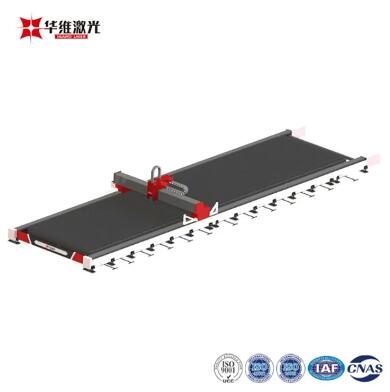Understanding the Key Specifications of Large-Format Fiber Laser Cutting Machines
2024-08-16
Introduction
Large-format fiber laser cutting machines have revolutionized industrial manufacturing, offering unparalleled precision, speed, and versatility. To fully harness the capabilities of these advanced machines, it’s crucial to understand the key specifications that define their performance. In this blog, we’ll explore the critical aspects such as cutting speed, laser power, and working area dimensions, and how these factors influence the machine’s efficiency and application.
Cutting Speed: The Need for Speed in Modern Manufacturing
Cutting speed is a vital specification that directly impacts the productivity of a large-format fiber laser cutting machine. It is usually measured in meters per minute (m/min) and determines how quickly the machine can process materials.
- Influencing Factors: The cutting speed is influenced by several factors, including the laser power, material type, and thickness. Higher laser power typically allows for faster cutting speeds, especially on thicker materials.
- Application Considerations: For industries where high throughput is essential, such as automotive or aerospace, machines with higher cutting speeds are preferred. However, balancing speed with precision is crucial to avoid compromising on cut quality.
Laser Power: Determining Material Capability
Laser power, measured in kilowatts (kW), is another crucial specification. It determines the types of materials the machine can cut and the maximum thickness it can handle.
- Material Compatibility: Higher power lasers, typically ranging from 1kW to 10kW, can cut through thicker and denser materials such as steel, aluminum, and titanium. For instance, a 6kW laser can cut through 20mm thick stainless steel with ease.
- Precision vs. Power: While higher power enables cutting thicker materials, it’s important to consider the precision required for the job. Lower power lasers are often preferred for cutting thinner materials where intricate designs and fine details are needed.
Working Area Dimensions: Size Matters
The working area, or bed size, of a large-format fiber laser cutting machine defines the maximum size of material sheets that can be processed without repositioning.
- Standard Sizes: Common working area dimensions range from 3000mm x 1500mm to 6000mm x 2000mm, accommodating large metal sheets and enabling efficient processing of large parts or multiple smaller parts in one go.
- Custom Applications: Industries with specific size requirements can opt for customized machines with larger or uniquely configured working areas to meet their production needs. This flexibility makes large-format fiber lasers ideal for diverse applications, from architectural metalwork to heavy machinery manufacturing.
Conclusion
Understanding the key specifications of large-format fiber laser cutting machines is essential for selecting the right machine for your production needs. By considering factors like cutting speed, laser power, and working area dimensions, you can ensure that your investment in this technology delivers optimal results, boosting productivity, and expanding your manufacturing capabilities.



